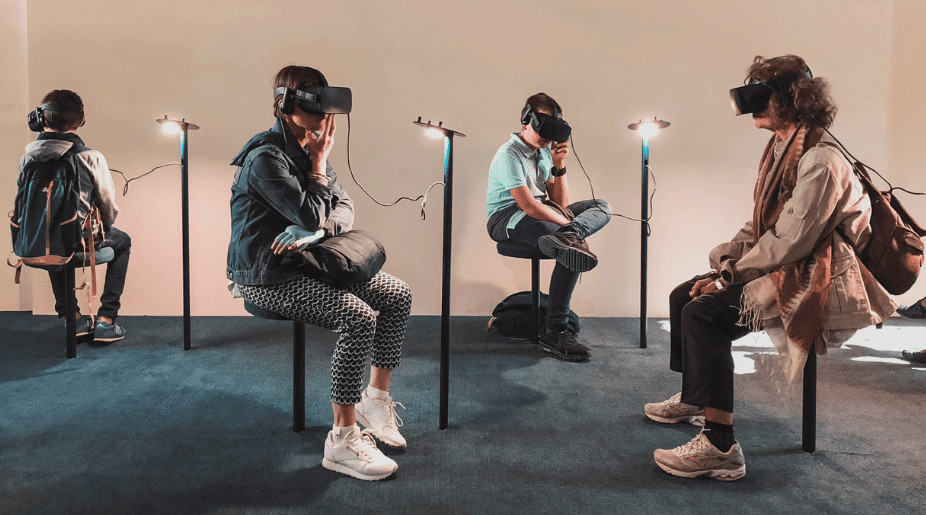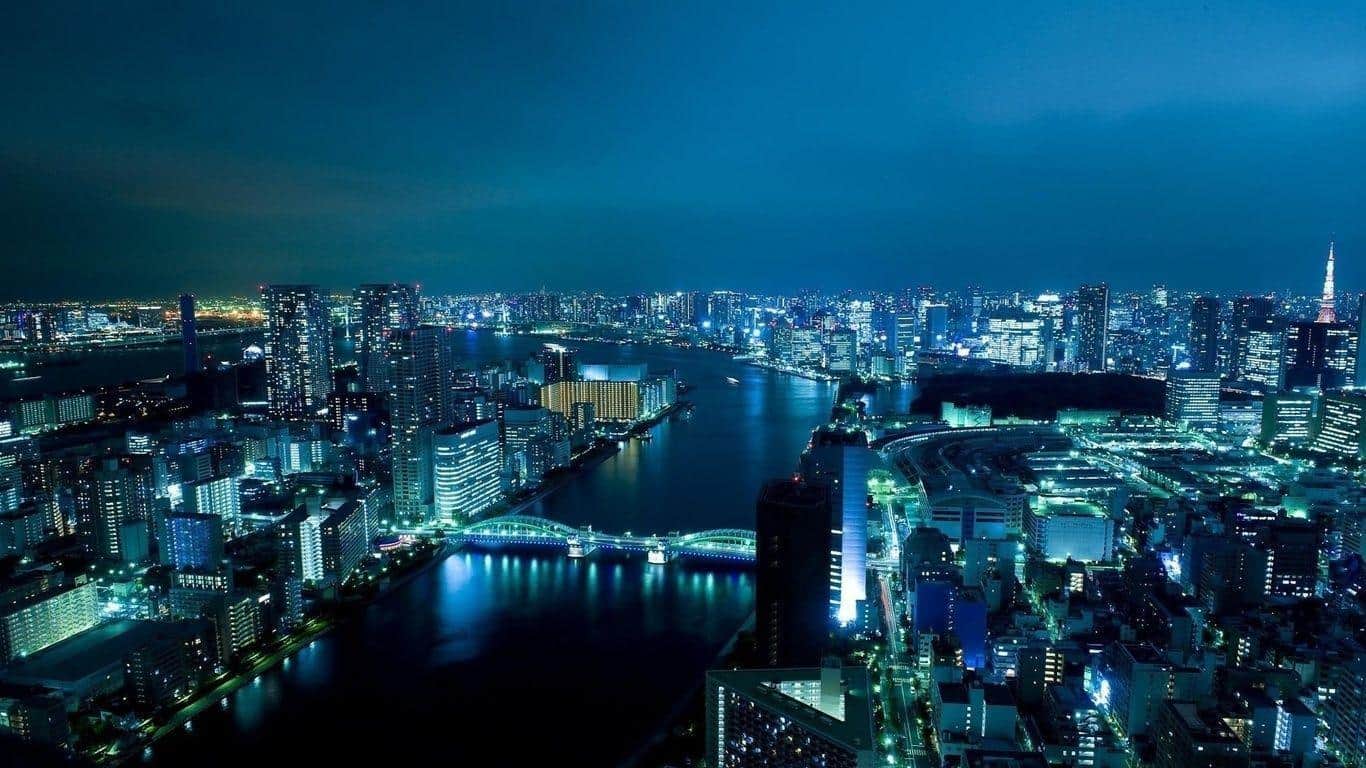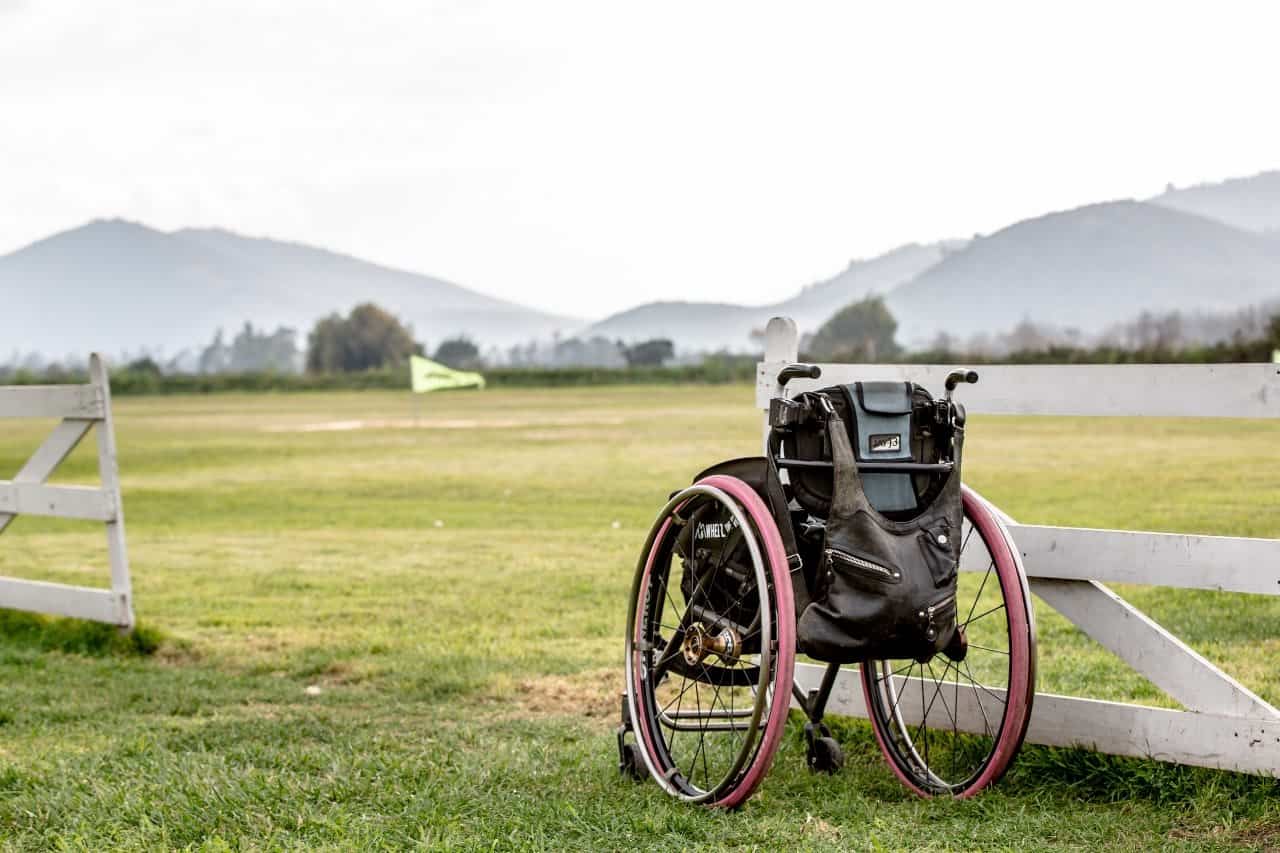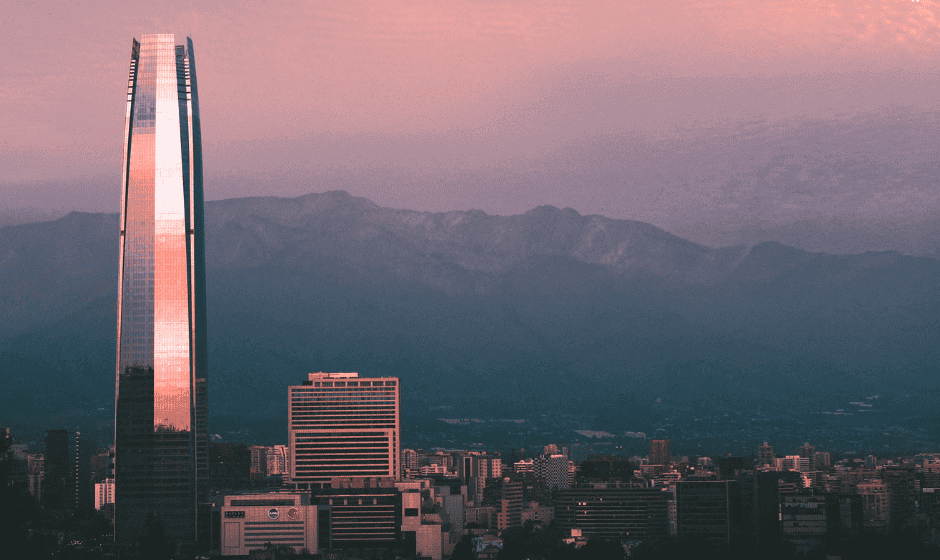Contxto – I may cover technology but I’m actually a woodsman and beach bum at heart. After all, my U.S. homeland of Maine features a lumberjack and sailor on its flag. In the middle is a moose wandering through pine trees in a swamp. How iconic.
Like other Mainers living abroad, I get nostalgic about the woods and oceanside, especially at work. You guessed it, I’m a daydreamer. While I live in a concrete jungle, I recently experienced a sliver of this dreamscape with Happinss and its virtual reality (VR) solution in Mexico.
Someway, somehow, it brought me to faraway places. Continue reading to learn more.
Snapshot
Description: Startup promoting corporate wellness and mental health via VR and SaaS
Country: Mexico/United States
Industry: Healthtech – VR
Founders: Wang-tsu Liu, Rodrigo Padilla, Miguel Orozco Lopez
Founding Date: 2016
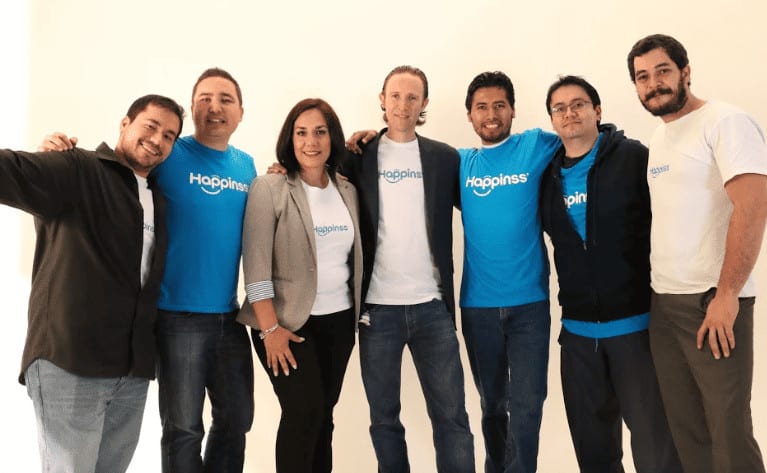
What?
Aurora borealises, pristine lakes, and rocky coastlines. These are some of the landscapes that you’ll encounter with Happinss’ VR goggles. Along with other products, the startup has created compelling and preventative mental health tools that companies are using to better support employees.
Other products include the Happinss Pod for heightened isolation and the Happy Bell. To promote mindfulness at work, the contraption chimes every certain number of hours. With this, users can take deliberate pauses out of their workday for a quick moment of regulated breathing.
Many of these products are also linked to the Happinss dashboard where companies track and monitor employees’ progress. These analytics support partners in visualizing the benefits of deliberate mindfulness over time.
How?
After working with teams of engineers and scientists from various fields, the Happinss goggles provide 360-degree videos capable of temporarily transporting you to another world.
Accompanied by music therapy and soothing narration in English or Spanish, this tool strives to foster mindfulness, contemplation and decreased stress levels for people stuck in the 9-to-5 grind.
For partners, the goggles can come individually or in a kit. With a monthly license, partners also receive goggles, noise-canceling headphones, an HR analytics dashboard, weekly content, and customizable online calendar.
Why VR in Mexico?
Many jobs are inherently stressful, especially in Mexico where citizens work an average of 2,228 hours a year. This is the highest global average out of any OECD country.
Based on this, Mexico passed the NOM.035 bill to curb such challenging work environments. If this doesn’t ring a bell, the legislation passed last year requires companies to invest in employees’ mental health.
Companies have had one year to prepare for its implementation. Now, the new law will go into effect this October. Since companies must start measuring and reporting improvements, Happinss certainly expects to see more business based on this new regulation.
To think that companies will require employees to use such preventative technology for mandatory relaxation time is mind-boggling.
If I had the opportunity to instantaneously travel to destinations such as Yosemite National Park or Horseshoe Bend for a quick sojourn during working hours, though, I would totally go for it.
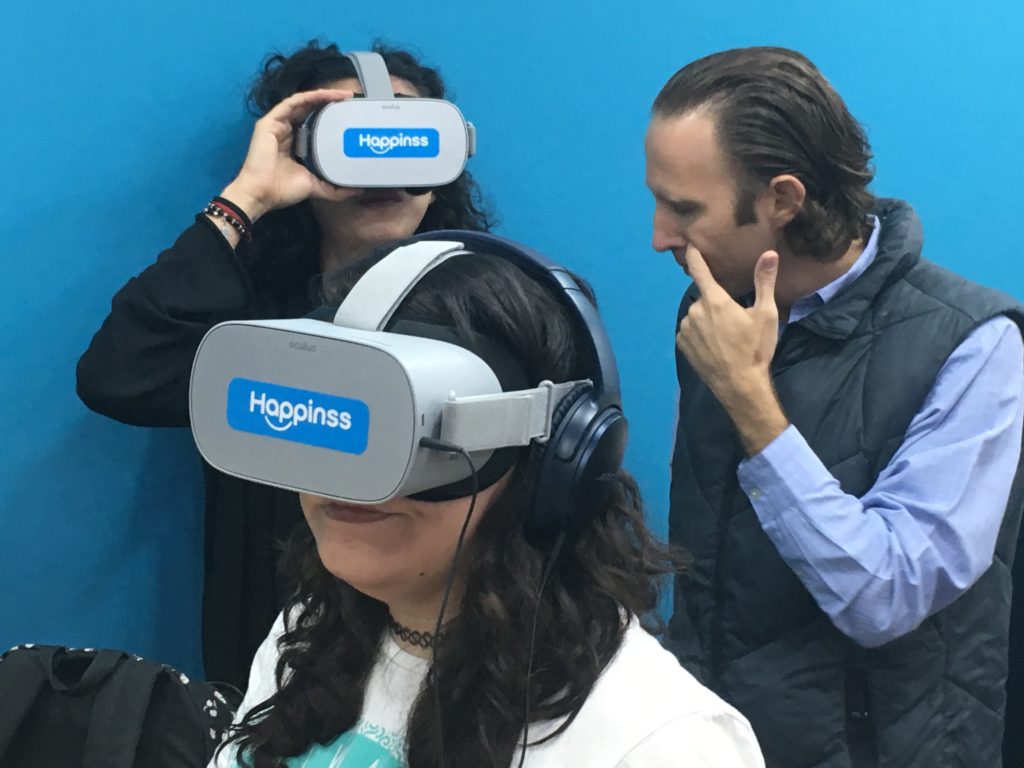
Story
Two of the co-founders, CXO Wang-tsu Liu and CEO Rodrigo Padilla, have known each other since elementary school. While Padilla wanted to devise technology to assist a family dealing with mental health issues, Liu’s side of the story comes from his affinity for the outdoors.
Years ago, Wang moved to Canada where all he wanted to do was go camping. Soon enough, he started going on various expeditions where his concept flourished. Eventually, he and his group of friends created “The Expeditioners” project. Together, they shared photos and videos of their excursions and gained a following in the process.
“Many people started to write to thank us because they loved traveling through our pictures and videos,” said Liu. “A lot of people said that it helped them through their day when they had a bad day. They would go to our page and use it to get inspired, get relaxed and to be able to reset themselves, to keep going.”
From there, Liu started working with Padilla at the Ministry of Innovation and Technology in Guadalajara. After experiencing VR for the first time in 2014, this is the gears started to roll.
Following suit, he and Padilla devised a method to combine the mental benefits of nature immersion with cutting-edge technology to remedy work-related struggles. For Liu and Padilla, both previously ran a company focusing on 360-degree video, so they had the expertise.
Alongside CTO and co-founder Miguel Orozco Lopez, the founders created a device allowing everyday proletariats to immerse themselves in nature without having to leave the office. While the actual wilderness is obviously preferable, this has proven to be a strategic answer to issues within corporate working cultures.
Status
Happinss is still in pre-seed stages. With offices in California and Guadalajara, it has worked with companies such as NXP, AMDOCS, CEMEX, Uber, among others.
One of Happinss’ most important collaborations was with the National Oncological Institute (ION) for cancer research. The startup worked with ION to enhance its chemotherapy treatment. Many oncologists believe that the balance of your emotional state can improve immune systems.
“In the end, the main health issue is stress,” said Padilla, who like oncologists, believes that stress is a leading cause of cancer. “Stress can cause you not only psychical but also psychological illnesses.”
This has certainly provided a potential niche market for Happinss.
“New clients are still coming, so we’re testing this new health niche,” said Diego Radberto, a biologist and neuroscientist researcher at Happinss. “It’s increasing because of the value perception of the product is way higher.”
“When you’re doing this just for relaxation purposes, the value is good. But when you are doing this for mental health or when you have a health condition, people value that much more.”
Business Model
Functioning as a B2B with an advanced SaaS, Happinss considers itself to be a “corporate wellness company.” It offers monthly subscriptions to partners with prices varying depending on the country. So far, Happinns operates in Mexico, the United States, and Australia.
Another factor is the level of service a company requires. Based on flat numbers, though, a license in the United States goes for US$1,000 a month to serve companies with up to 100 employees.
Venture Funding
As of today, the only venture funding has involved raising US$270,000 between angel investors and grants.
Future
Some of Happinss’ goals include raising a US$1.5 million seed round with a US$7.5 million valuation cap. It also wants to reach consumers in the long run while working with healthtech professionals in Silicon Valley.
Thoughts
When I tried the goggles myself, it felt like I was reaching the climax of a Black Mirror episode, but without an apocalyptic scenario. As a tech alternative to mindfulness, this didn’t feel like some dystopian creation.
At first, it may have been a little disorientating. The fact of the matter is that I could still see the outside world from the bottom part. Maybe I didn’t have them on tight enough but this could potentially be something to tweak. It made me a little dizzy before I got acclimated.
Truly, I’m sold on this company. At the same time, it’s a little perplexing why it is still in the pre-seed stages after being around since 2016. There could be many reasons as to why it hasn’t raised more funding or grown in terms of revenue.
For instance, it may be extremely capital-efficient, bootstrapping or the prototype took longer than expected to develop. In turn, this could have left Happinss with fewer investor alternatives. After all, most VCs look for traction or product-market fit.
Also, if Happinns is all about raising work productivity, then it may want to consider another way to measure progress. That’s to say, surveys and questionnaires may be a good start. Eventually, though, people’s biases could interfere with a reportedly data-driven product.
Conclusion
Ultimately, perhaps Happinss could invest in more research and development to objectively track employees’ responses. In the regard, the company can be more certain on the treatment and how it improves productivity.
While the technical side of this might be complex, some optimal alternatives could involve tracking vitals, physiology and neurological responses to the service. Eventually, these rates could be turned into quantifiable data. Now, that’s what I call a disruptive product!
According to Liu, Happinss has previously integrated biofeedback features on its products. Lately, though, it has taken a step back from the project based on its current version and testing out new wearables. Over time, it may have better biofeedback offerings, which I think would be an upgrade.
Nonetheless, Happinss’ devices are evidence that we have reached a new stage in the 21st century where virtual reality is being used to alleviate burdens of everyday reality. I sure hope these are available to consumers someday.
-JA
